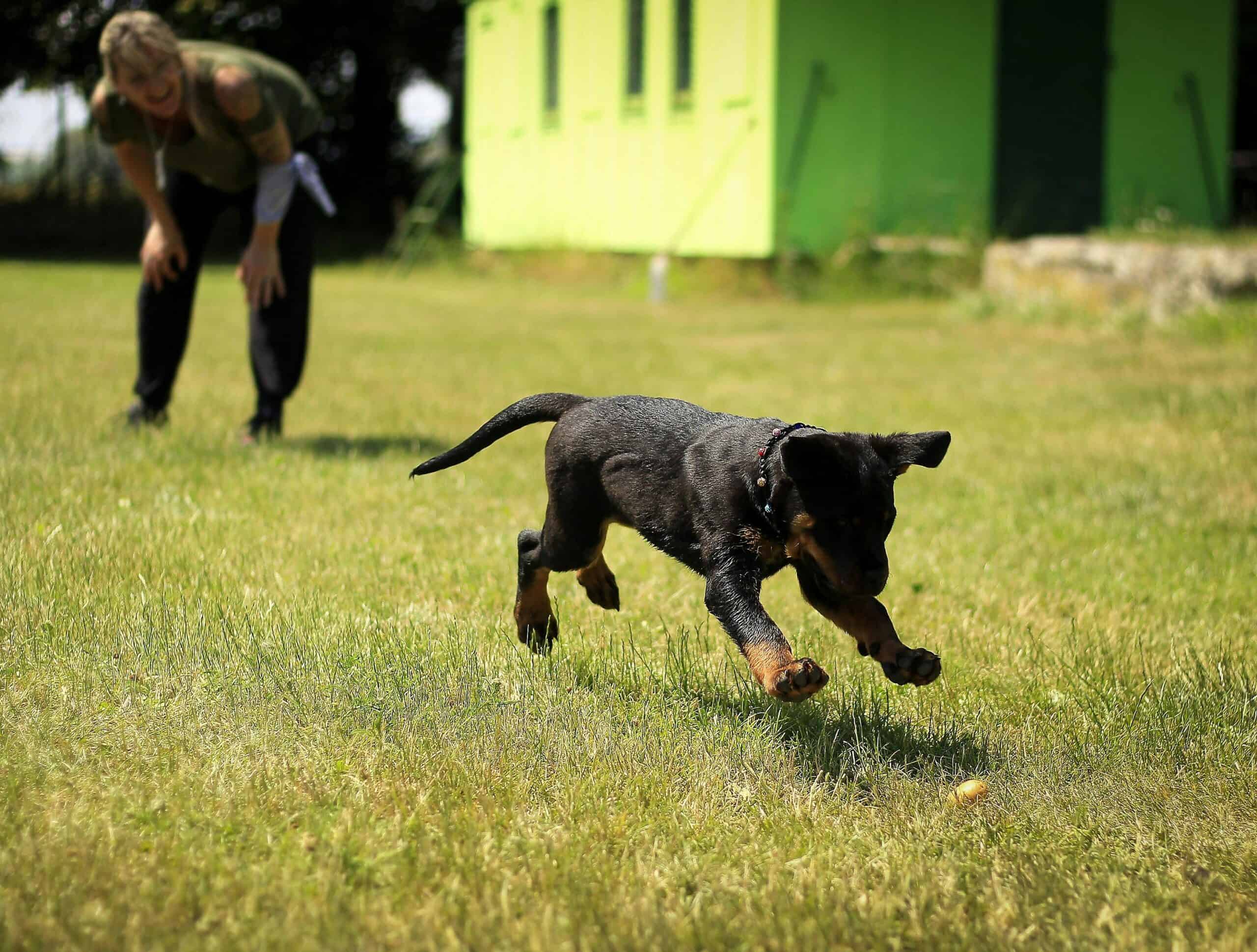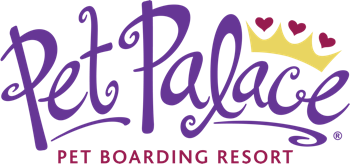Dog Training 101: Everything You Need to Know About Training Your Dog
Posted by Lora Shaw on May 19, 2025

Dog Training: What You Need to Know
- Prepare with the right tools and mindset – Gathering supplies like quality leashes, harnesses, treat pouches, and treats helps set the stage
- Start training early and adjust for age – Puppies are generally more receptive and adapt to shorter sessions, while older dogs can learn too, but may need more structure and patience
- Address serious behavior issues with professional help – Problems like leash disobedience, resource guarding, running away, biting, and reactivity are best handled with a trainer
- Use positive reinforcement and ongoing practice – Reward‐based methods (praise, treats, toys, touch) work better long term
Deciding to take your dog to a professional trainer can be one of the best decisions you can make as a pet owner. Not only will it make your life easier and less stressful, but it will give your pup the guidance needed to behave in appropriate ways, keep out of harm, and have a happier, more fulfilling life.
At Pet Palace, we provide numerous dog training programs to help your pet learn and thrive, and our expert trainers use proven methodologies to deliver the best results.
Below, we’ll detail everything that goes into our programs, but first let’s take a look at your role as a pet owner and how you can help to prepare your pup for the journey ahead!
How to Prepare for Dog Training
Prior to starting training, you’ll want to pick up any supplies recommended by your trainer. Having key items on hand can help you get your dog used to certain tools and training techniques, making them more inclined to follow instructions later.
We recommend the following:
- Treat pouch – You’ll want to have a compact and reliable treat pouch to carry around as this will prevent you from losing or misplacing treats, and it will also keep them secured and away from your dog. You don’t want your dog to get sick from eating too many or even eating parts of a bag.
- High-value treats – Treats are often the name of the game in dog training, as they give your pup a clear reward for demonstrating desired behaviors. Choose nutritious treats that won’t pack on the pounds and be judicious in distributing them.
- Leashes – To keep your dog under control during walks and other outings, you will want to have a ready supply of quality leashes. You may also want to invest in “long line” leashes of 10–15 feet since these give your dog more room to roam while still providing the control you need.
- Dog collars and harnesses – Invest in quality dog collars, or better yet harnesses, to help keep your dog under control. Harnesses are ideal since they don’t attach around a dog’s neck but rather fit firmly around their torso, ensuring no discomfort.
- Clickers – These handy tools can help reinforce behaviors in your dog once they have learned key training methods and begin to associate them with the clicking sound.
- Cot – Having an appropriately sized cot will give your dog a “base of operations” within the home and help them to feel that they are accepted and wanted.
Along with this, we highly recommend starting crate training and potty training with your puppy right away. The tools outlined above will be valuable during that time. Use praise and reward-based methods to lure your puppy into their crate, encouraging them to begin going in on their own. This is preferable to pushing them in and shutting the door, as doing so can distress your dog.
At the end of the day, though, you want your training sessions with your pup to be fun. Making them short in duration, at least initially, and light in tone, will keep your dog engaged, happy, and more likely to learn and be compliant.
Dog Training Insights
When to Start Training Your Dog
You will want to begin basic obedience training for puppies around the 6-to-7-week range, with reinforcement occurring within the home throughout their life. If the training sessions you will be taking your pup to are on the longer side, however, dogs 12 to 14 weeks in age may be more agreeable and open to instruction.
Expectations for Training Puppies vs. Older Dogs
Training for puppies vs. adult dogs has some key differences. Puppies are open to learning new habits, while adult dogs may take longer to train and require more effort. Patience and positive reinforcement is needed for puppies, while adult dogs need more consistent structure and consequences.
Remember, just like human children, puppies have shorter attention spans than adult dogs, so they can lose focus quickly and may need shorter training sessions, while adult dogs can handle longer training sessions. Puppies need early socialization and are generally more open to new experiences, while unsocialized adult dogs may take more time.
Dog Behaviors That Should Be Addressed by a Professional Trainer
These are some concerning behaviors that present a safety risk and would prompt the need for professional training:
- Leash disobedience, leading to an owner’s lack of control
- Running away
- Biting after the teething stage
- Stealing food off counters and from hands
- Resource guarding
- Reactivity
- Extreme fear
- Excessive jumping
- Biting at leashes
- Destructiveness
- Mounting
- Marking
All dogs can benefit from training, of course, but the particular behaviors outlined above can create long-term problems for both pups and their owners, so dogs exhibiting them are sorely in need of training. Contact our training experts for assistance.
How Long Results Take in Dog Training
If your dog is practicing learned skills consistently, you should start to see results within a few days of starting the training. After a week, you should notice your dog making better choices and reacting faster to given commands. Working with your dog on the skills they learned after the program is extremely important for the longevity of your dog’s training, as we’ll examine below.
Tips for Dog Owners on Supplemental Training at Home
After your dog has been through one of our in-depth training programs at Pet Palace, we highly recommended that you continue to practice training skills daily to reinforce good habits and behaviors. Proofing commands can take years of practice to become second nature and can sadly be lost after only a short few months of inconsistency.
Reinforce Training Through Positivity
The best and most effective way to keep your dog on track with their training is to use positive reinforcement measures.
Negative reinforcement measures – involving punishments, choke collars, shock collars, and other methods – create fear and anxiety in your dog that can lead to long-term problems, and they also simply aren’t as effective anyway.
Therefore, you should gravitate toward:
- Praising your dog when they behave and fulfill training initiatives
- Distributing treats as rewards
- Distributing beloved toys as rewards
- Giving your dog reassurance via physical touch
Further Training
Even if you have the best of intentions and really work at it, supplemental training at home might not always pan out. It can be difficult to be as consistent with your dog’s training as a professional would be, but don’t beat yourself up!
Refresher courses are highly recommended for the longevity of your dog’s training. Your trainer can see what skills they have excelled at and which ones need some extra work. With another session or two your dog should be well on their way to improvement!
Dog Training Services at Pet Palace
At Pet Palace, we’ve been working with animals for years, providing premium cat boarding and dog boarding, convenient doggy day care, and professional pet grooming.
One of our expanding services is our professional pet training, as we now have options for pet parents in:
- Columbus, Ohio
- West Chester, Ohio
- Pittsburgh, Pennsylvania
- Cary, North Carolina
Best yet, more locations are on the way, so keep an eye peeled on our dog training page for updates! We offer three options for customers that are tailored to the developmental stages of their dogs:
- Polite Puppy Program – This program is a 10-day course that has been designed for puppies aged eight months and younger. Our training course will help your pup learn key obedience skills and allow them to better socialize in group settings, such as day cares.
- 10-Day Basic Adult Program – Our basic adult program is also a 10-day course, but has been designed to cater to dogs eight months and older. As we noted above, adult dogs can handle and thrive in longer training sessions, so your dog will spend the day in one-on-one training with our professionals to get them ready for life at home.
- 20-Day Advanced Adult Program – The 4-week course is for dogs eight months and older. It’s a results-driven program that has been developed to facilitate the most consistent training possible, and we even customize certain elements based on performance and abilities.
Enrollment Requirements
To enroll a pet in our dog training programs, an evaluation call with our trainer will be the first step. Most evaluations are able to be carried out over the phone, but in some cases we may require an evaluation day, or a meet and greet. Usually, in such cases, we can use the first day of training as an evaluation day, since payment is not taken until pickup on the first day.
Puppies and adult dogs must also be of age and have received certain vaccinations. We require DHPP, bordetella, and rabies for all dogs who enter the facility. Rabies is usually last to be given, at around 17 weeks.
If you are interested in enrolling your puppy, they must be spayed or neutered if they are over 6 months of age, with the cut-off age for the program being 8 months of age. If they have not been spayed or neutered between 6–8 months of age, they can still train in the Polite Puppy Program, but they just will not be able to participate in group play.
Basic Commands Your Dog Will Master at Training
Our training programs are focused on teaching basic obedience skills using the marker training method. Marker training is a technique where the dog is given a signal, known as a marker, by the handler or trainer exactly when they perform a correct behavior.
The marker is then followed, after a short delay, by the dog receiving a reward, such as food or playing with a toy. This means that the particular behavior is positively reinforced and more likely to be repeated. This is also known as positive reinforcement or operant conditioning.
Effective training sessions will help your dog respond to simple commands like “sit,” “stay,” “come,” “lie down,” “heel,” and “leave it.” These commands will give your dog a solid baseline and can be put to use in everyday situations as well as times of emergency.
How We Customize Our Programs to Your Pup
Every dog training program we offer is customized to meet each guardian’s training goals based on their unique dog. During the evaluation process, your trainer will ask about all aspects of your dog’s behavior, their attributes, and their environment. This includes info on breed, age, daily routine, diet, exercise, socialization abilities, your lifestyle, and your training goals.
With this information in tow, your trainer will be able to establish a training plan to best accomplish key training goals.
Pet Parent Involvement
Pet parents will be responsible for reading over report cards each day and applying their dogs’ learned skills homework at home each night. This gives you and your dog the opportunity to learn at the same pace.
Communicating with your trainer about how the homework with your dog went each night will help them give advice on your methods and will improve your communication while training your dog.
FAQs About Dog Training
Our trainers have done it all and seen it all, so we’re ready to answer your pressing questions about dog training. Here are some common ones we receive.
Are all breeds capable of training?
Yes, all breeds are capable of training, though the breed of your dog may dictate approaches used. Breed should always be taken into account when determining why a dog does a certain behavior and when deciding on the best training options.
I have multiple dogs. Should they all be in training?
It’s best to have all your dogs on the same page when it comes to the communication used during training and the development of learned commands. Not doing so can make it incredibly difficult to keep control of multiple dogs at one time, as an untrained dog can sway the decision making of one still learning.
Do you work with reactive or aggressive dogs?
Yes, we will work with reactive dogs, but aggressive dogs pose more of a problem.
Dogs that are aggressive toward humans or other dogs are not a good fit to train in a boarding facility like Pet Palace and may do better at a facility dedicated to behavioral training only. However, for dogs with reactivity and no aggression, our boarding facility environment can be an excellent tool when working through the issue.
What are some of the easiest and hardest tricks to teach dogs?
Natural movements brought about by commands like sit, down, paw, spin, and bow are all relatively easy tricks to teach your dog. Tricks that require more mobility and impulse control, such as sitting pretty, walking backwards, or heeling for extended periods, will be more difficult to teach and will require more practice and consistency.
What are some commands all dogs should know?
The most important command all dogs should know is a recall command. In emergency situations, calling your dog back to you is the highest priority. All dogs should also know how to walk calmly on a leash as this can be a major factor in a successful symbiotic relationship between a dog and their guardian.
How do you help your dog ignore other dogs?
Having your dog leashed when out and about is not just legally required in many areas, it’s the best method of protection for your dog. This can help you keep them under control and away from any strange or possibly aggressive dogs.
You’ll also want to keep your distance from such dogs to avoid tempting your pet, and you can additionally call your dog’s name and reward them with a treat when they turn toward you rather than focusing on the other animal.
Need an Expert Trainer? Contact Pet Palace!
If you’re in Pittsburgh, Columbus, West Chester, or Cary, or any of their nearby areas, reach out to the team at Pet Palace for quality dog training! Our dedicated trainers will give your dogs the tools they need to succeed in and out of the home!

Categories: Dog Training, Dogs
Archives
Recent Articles
Categories
Monthly Archive
- October 2025
- September 2025
- August 2025
- July 2025
- June 2025
- May 2025
- April 2025
- March 2025
- February 2025
- January 2025
- December 2024
- November 2024
- October 2024
- September 2024
- August 2024
- July 2024
- June 2024
- May 2024
- April 2024
- March 2024
- February 2024
- January 2024
- December 2023
- November 2023
- October 2023
- August 2023
- July 2023
- June 2023
- May 2023
- April 2023
- March 2023
- February 2023
- January 2023
- December 2022
- November 2022
- October 2022
- August 2022
- July 2022
- June 2022
- April 2022
- March 2022
- February 2022
- November 2021
- October 2021
- November 2020
- September 2020
- July 2020
- March 2020
- January 2020
- November 2019
- September 2019
- July 2019
- March 2019
- January 2019
- December 2018
- November 2018
- October 2018
- August 2018
- July 2018
- June 2018
- May 2018
- April 2018
- March 2018
- February 2018
- January 2018
- December 2017
- November 2017
- October 2017
- September 2017
- August 2017
- July 2017
- June 2017
- May 2017
- April 2017
- March 2017
- February 2017
- January 2017
- December 2016
- November 2016
- September 2016
- August 2016
- July 2016
- June 2016
- May 2016
- April 2016
- March 2016
- February 2016
- December 2015
- November 2015
- October 2015
- September 2015
- August 2015
- July 2015
- May 2015
- March 2015
- February 2015
- January 2015
- December 2014
- November 2014
- September 2014
- August 2014
- July 2014
- June 2014
- May 2014
- March 2014
- February 2014
- January 2014
- December 2013
- November 2013
- October 2013
- September 2013
- August 2013
- June 2013
- May 2013
- March 2013
